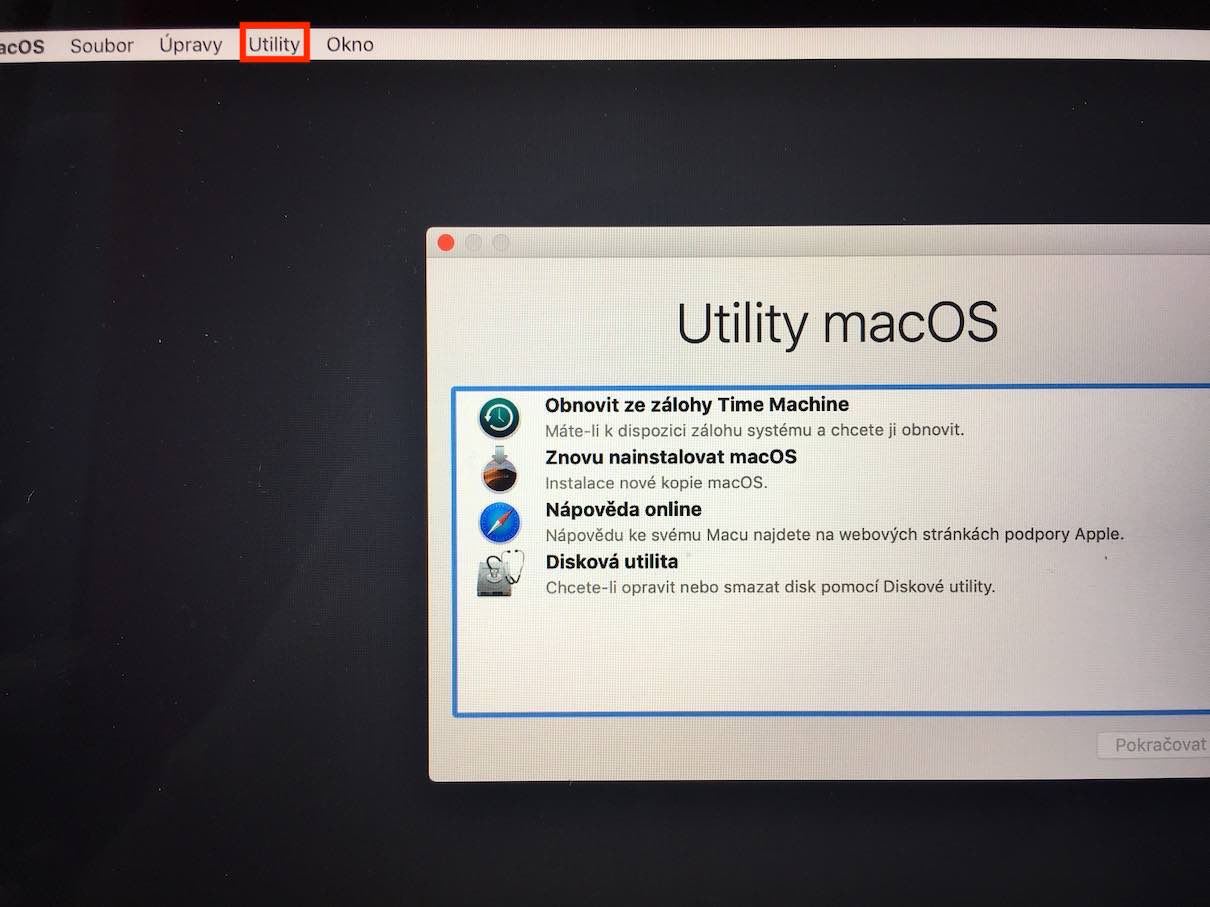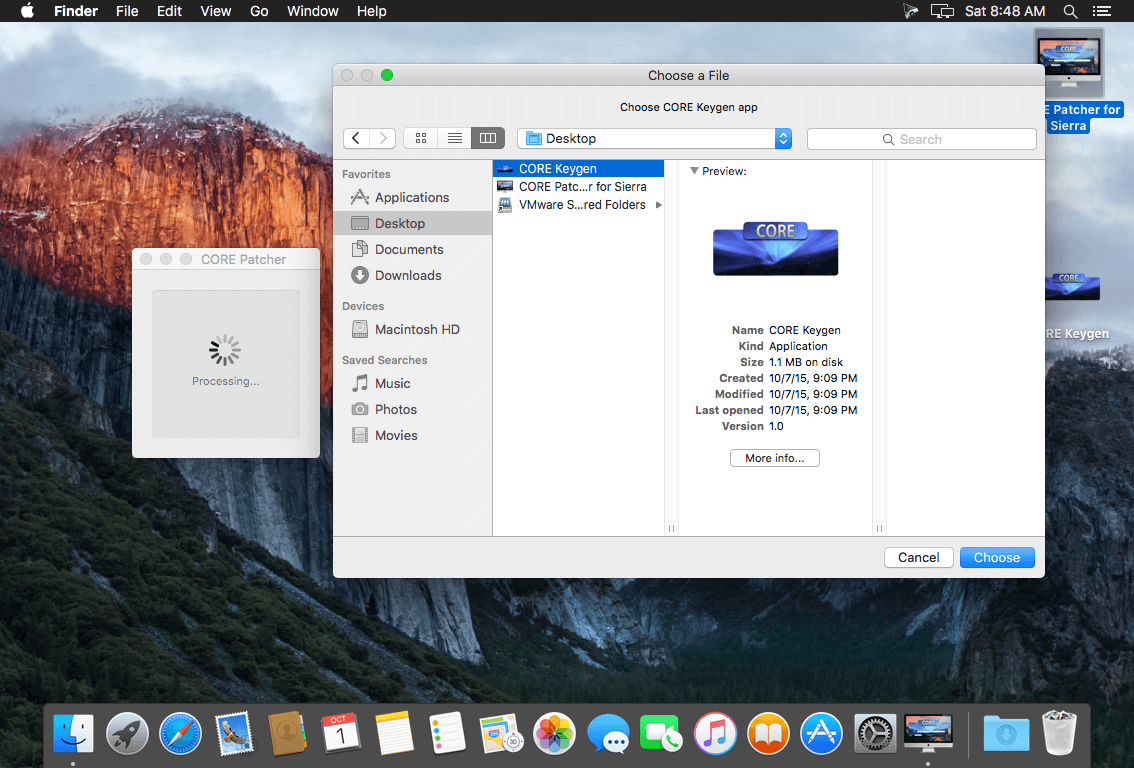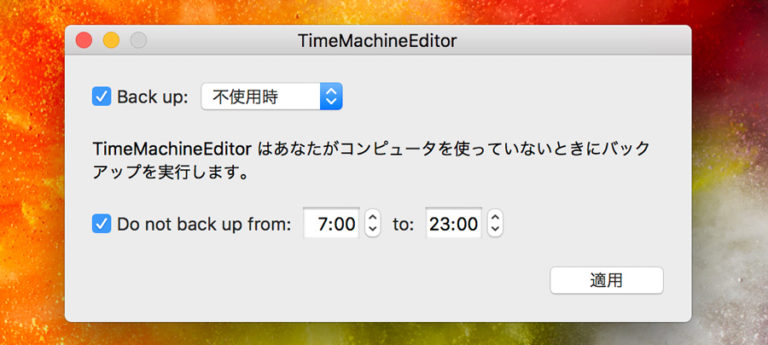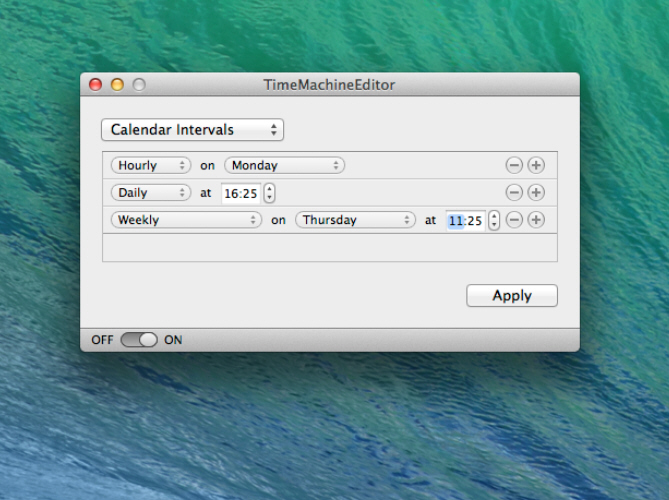

- #DISABLE TIMEMACHINEEDITOR HIGH SIERRA HOW TO#
- #DISABLE TIMEMACHINEEDITOR HIGH SIERRA INSTALL#
- #DISABLE TIMEMACHINEEDITOR HIGH SIERRA PRO#
- #DISABLE TIMEMACHINEEDITOR HIGH SIERRA CODE#
- #DISABLE TIMEMACHINEEDITOR HIGH SIERRA MAC#
While it has become more reliable since its introduction, problems still occur. Time Machine is extremely convenient, but it can be a troublesome backup tool. It will have a name like -175540.inProgress. You’ll find that folder in the “Backups.backupdb” folder on your Time Machine drive. Find and remove the “.inProgress” folder. Make sure Spotlight is not indexing your backup by adding your Time Machine volume to the Privacy pane of the Spotlight preferences window in System Preferences.ģ. This will disable Time Machine and stop any backup processes.Ģ. Uncheck the box next to “Back Up Automatically” in the Time Machine preference window. If you don’t see that number increase over 30 minutes, you’ll need to take action. That number should be steadily, if slowly, increasing. If the backup is progressing properly, it should show the number of items remaining to be processed. Look for the text underneath the Time Machine progress bar. If the Time Machine process is starting or appears to be lagging, open the Time Machine preference pane in System Preferences. One of the most common bugs in Time Machine involves hanging on the beginning of the backup process. If you find any errors, run disktuil repairVolume. In our example we would use diskutil verifyVolume /dev/disk1s5.ĥ. Verify the volume by typing diskutil verifyVolume. Find the device and disk number, formatted like disk1s5, as in our example.Ĥ. Locate the partition used for Time Machine. By default, it shows an option to make hourly, daily, weekly or monthly backups on specified day, but you can use add button to further refine the backup schedule. List the attached disks by typing diskutil list.ģ. If you want to run the backup operation at defined day and time, choose Calendar Intervals from drop-down menu at top, and then set the backup day and time. Open Terminal from “Applications/Utilities/Terminal.app” or type “Terminal” into Spotlight.Ģ. You may need to consider replacing the drive if this problem appears more than once.ġ. It might indicate that there’s a problem with the drive. Keep in mind that this can be a result of early problems with the disk itself. The simplest method requires diskutil in Terminal. To address this problem, you can try to repair the problems with the disk. If your drive’s permissions have been damaged, you will often be prevented from writing to the disk. Continue holding the keys down until the computer restarts again and you hear the startup chime twice.ģ.

Plug the power cable back in or replace the battery if you removed it. Hold these keys and the power button for ten seconds.Ĥ.
#DISABLE TIMEMACHINEEDITOR HIGH SIERRA MAC#
After your Mac shuts down, press Shift + Control + Option on the left side of the built-in keyboard, then press the Power button at the same time. If you cannot disconnect the power, use a keystroke instead. If you can remove the battery or disconnect the power cable, do that. Fixing the problem requires an SMC reset and a PRAM reset.
#DISABLE TIMEMACHINEEDITOR HIGH SIERRA INSTALL#
I tried the other Volumes also but the system doesn't start.Īt the moment I install the system again to get back to a clean High Sierra.After updating to Sierra or High Sierra, some users find that Time Machine simply won’t back up.
#DISABLE TIMEMACHINEEDITOR HIGH SIERRA PRO#
After rebooting the MacBook Pro turns off after the half of loading. Know I get the message the directory is not empty. Mv: rename System/Library/Extensions/AMD1000Controller.kext to AMD_Kexts/AMD1000Controller.kext: Directory not emptyĪnd more AMD Controllers with same message The APFS Volume disk2s1 is already unlocked (mounted) Sudo nvram fa4ce28d-b62f-4c99-9cc3-6815686e30f9:gpu-power-prefs=%01%00%00%00 reboot(reboot while pressing cmd+d)ĭiskutil apfs list (find the Logical Volume UUID: the first under the name Volume Macintosh HD) So I started in Single-User-Mode by pressing cmd+s and typed in:
#DISABLE TIMEMACHINEEDITOR HIGH SIERRA CODE#
So after googling a time I found the code to change (I'm not a Terminal-Super-User). But the problem is that High Sierra on a SSD have the new apfs system. After I've restarted it didn't work and I tried the steps again. Then I've updated the MacBook Pro to High Sierra. TimeMachineEditor triggers Time Machine backups when it is most appropriate, the whole backup process is still handled by Time Machine.

You can change the interval or create a more sophisticated scheduling. Mv System/Library/Extensions/AMD*.* AMD_Kexts/Įverything works fine know. TimeMachineEditor lets you change the one-hour interval of Time Machine backups.

Open the Terminal and use the following code:ĭiskutil cs list (find Logical Volume UUID: last item)ĭiskutil coreStorage unlockVolume UUID (UUID: from previous command) Start in Single-User Mode (boot while pressing cmd+s) I tried the following steps under Sierra with a good result (I've got an AMD graphic card for NVIDIA change the code from AMD to NVIDIA):
#DISABLE TIMEMACHINEEDITOR HIGH SIERRA HOW TO#
Yesterday I tried the solution for my MacBook Pro under Sierra from the forum under this link: MacBook Pro: How to disable discrete GPU permanently from EFI?


 0 kommentar(er)
0 kommentar(er)
